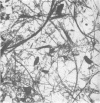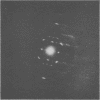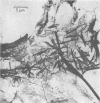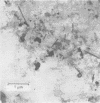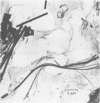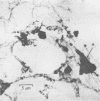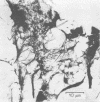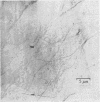Abstract
Pooley, F. D. (1972).Brit. J. industr. Med.,29, 146-153. Electron microscope characteristics of inhaled chrysotile asbestos fibre. Specimens from 300 lungs have been examined under the electron microscope to determine the morphology and diffraction characteristics of any chrysotile asbestos they contained. In 120 cases, material was prepared by alkali digestion and the residual dust was examined. In all cases standard 6-micron histological slides were partially ashed before the residue was transferred to the electron microscope grids. Of the 300 specimens examined, 20 came from men with prolonged industrial exposure to chrysotile, 87 from cases of mesothelioma, and the remainder from control groups drawn from rural and industrial populations.
Chrysotile fibres were readily identified by the characteristic polycrystalline diffraction pattern. The hollow appearance of the single fibres and their shape and arrangement also help in the identification. Specimens from men without industrial exposure contained either single short fibres or aggregates scattered throughout the lungs. In specimens from industrially exposed men, fibres were very numerous and found as strands of single fibres mainly grouped together in discrete locations. Ferruginous bodies were found rarely and only on straight fibre bundles of over several micrometers in length.
Full text
PDF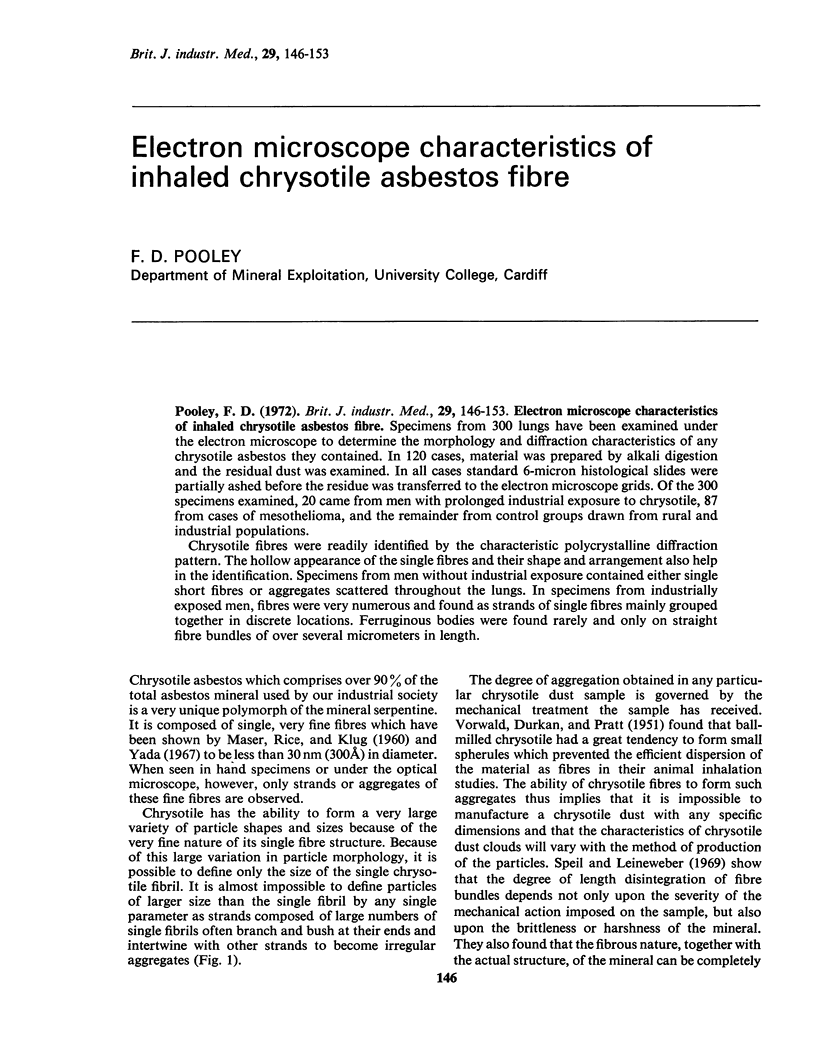


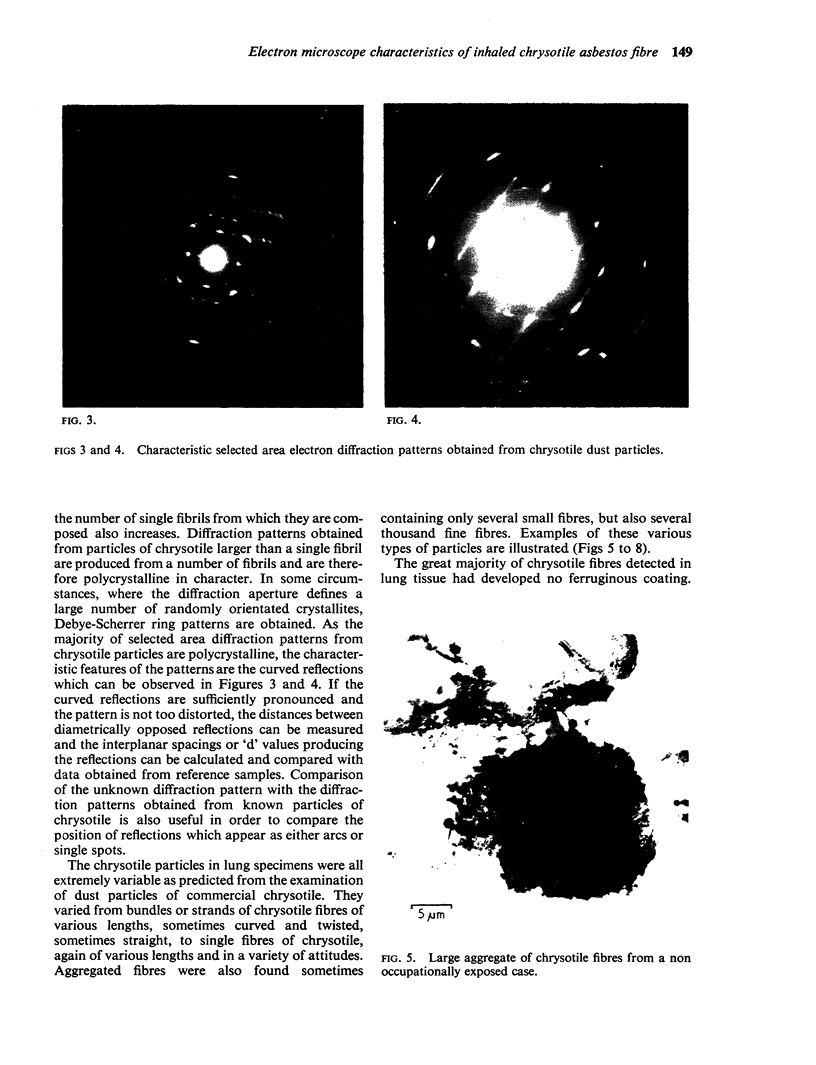
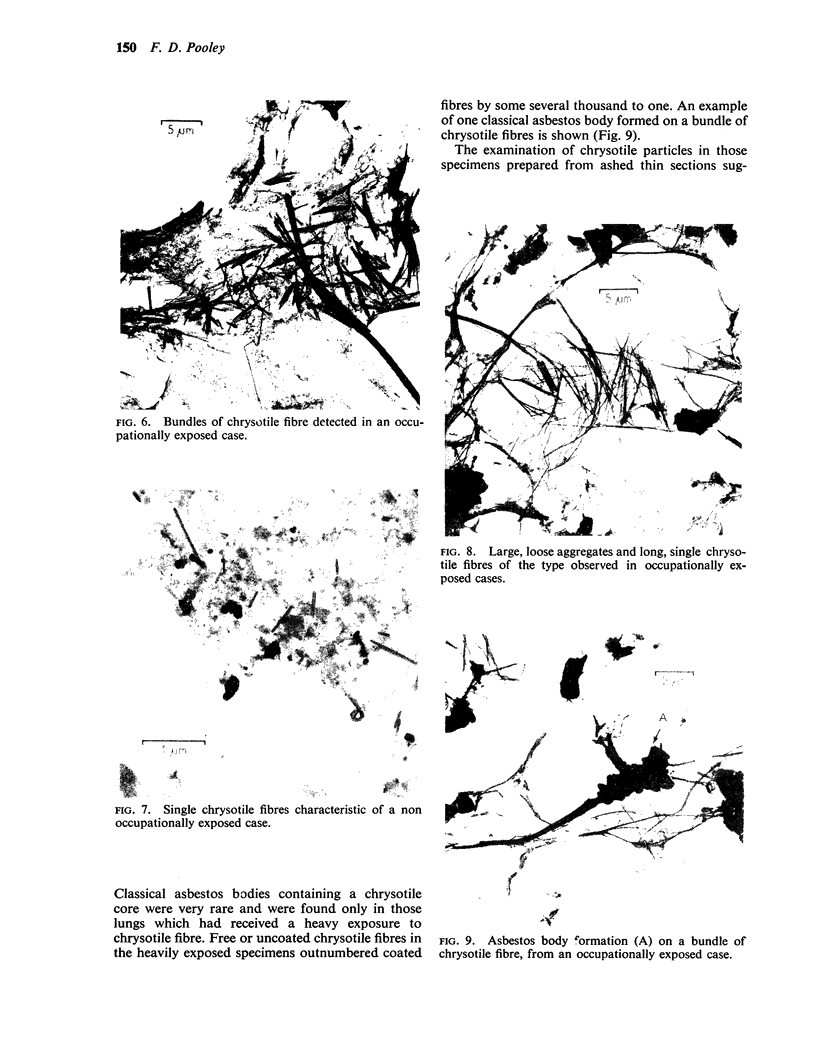

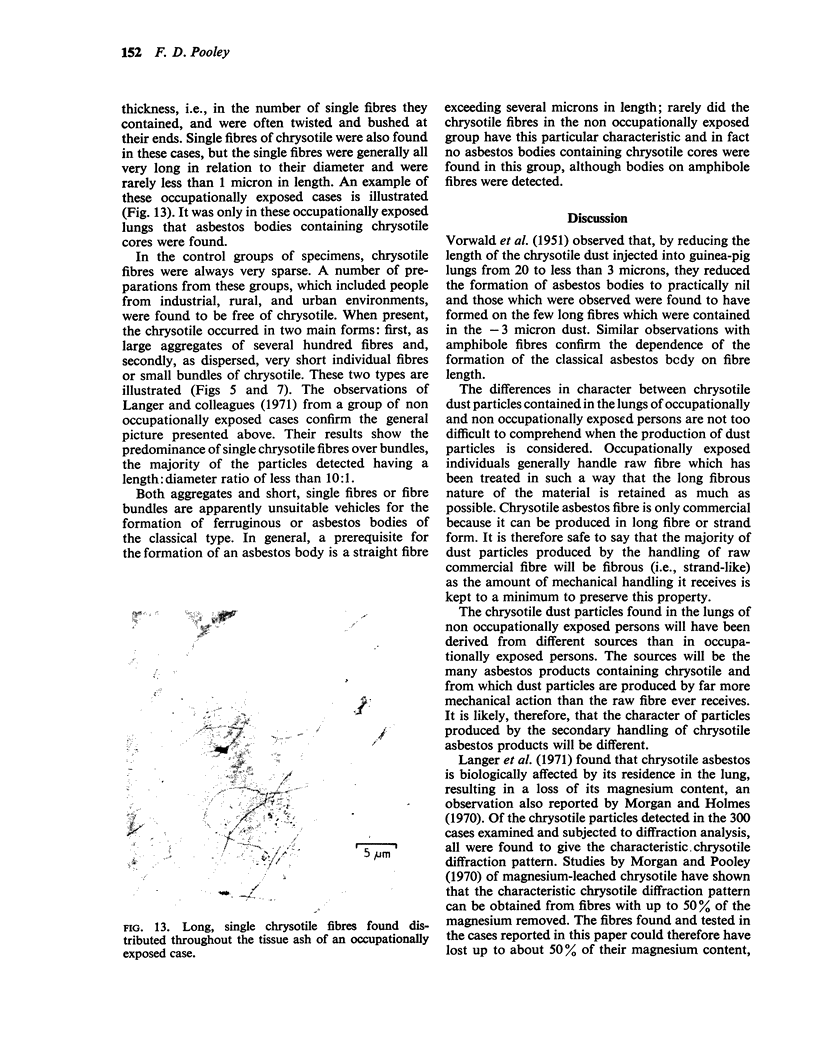
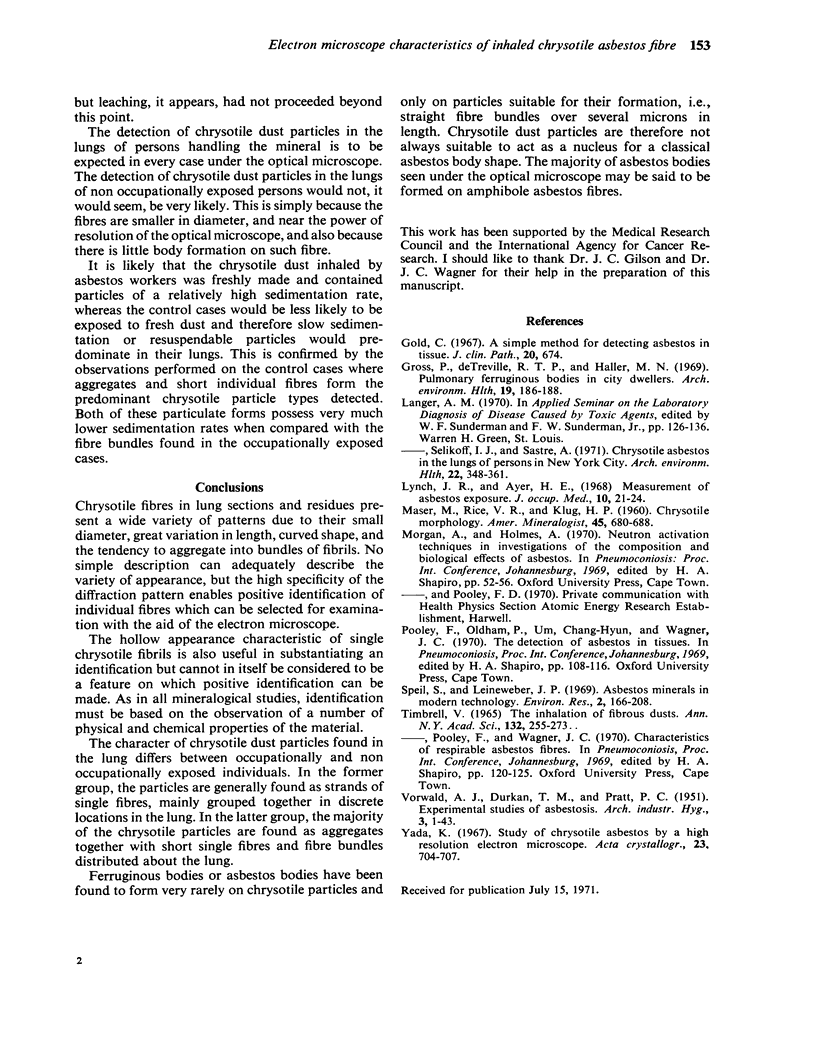
Images in this article
Selected References
These references are in PubMed. This may not be the complete list of references from this article.
- Gross P., DeTreville R. T., Haller M. N. Pulmonary ferruginous bodies in city dwellers. A study of their central fiber. Arch Environ Health. 1969 Aug;19(2):186–188. doi: 10.1080/00039896.1969.10666827. [DOI] [PubMed] [Google Scholar]
- Langer A. M., Selikoff I. J., Sastre A. Chrysotile asbestos in the lungs of persons in New York City. Arch Environ Health. 1971 Mar;22(3):348–361. doi: 10.1080/00039896.1971.10665854. [DOI] [PubMed] [Google Scholar]
- Lynch J. R., Ayer H. E. Measurement of asbestos exposure. J Occup Med. 1968 Jan;10(1):21–24. [PubMed] [Google Scholar]
- Speil S., Leineweber J. P. Asbestos minerals in modern technology. Environ Res. 1969 Apr;2(3):166–208. doi: 10.1016/0013-9351(69)90036-x. [DOI] [PubMed] [Google Scholar]
- Timbrell V. Human exposure to asbestos: dust controls and standards. The inhalation of fibrous dusts. Ann N Y Acad Sci. 1965 Dec 31;132(1):255–273. doi: 10.1111/j.1749-6632.1965.tb41107.x. [DOI] [PubMed] [Google Scholar]
- VORWALD A. J., DURKAN T. M., PRATT P. C. Experimental studies of asbestosis. AMA Arch Ind Hyg Occup Med. 1951 Jan;3(1):1–43. [PubMed] [Google Scholar]



